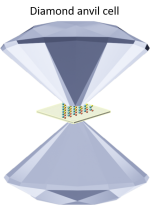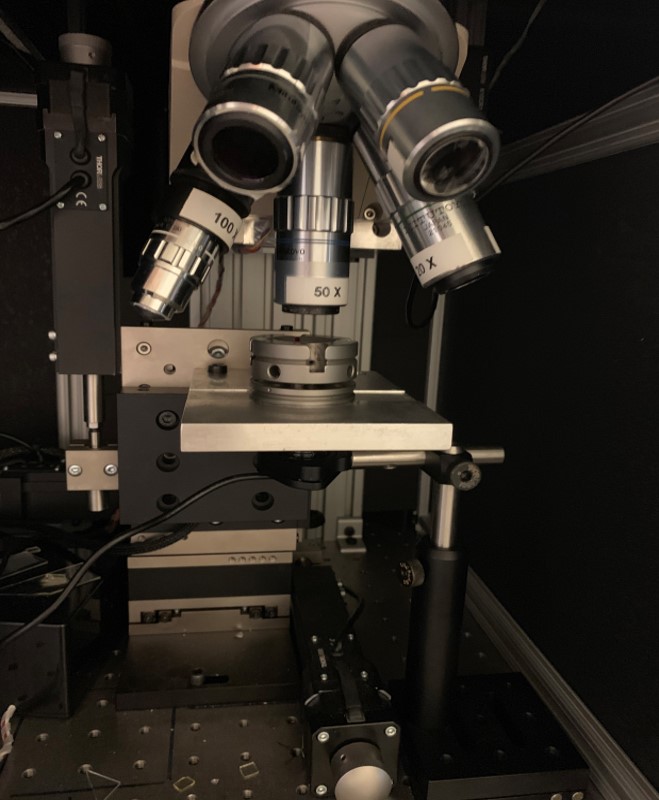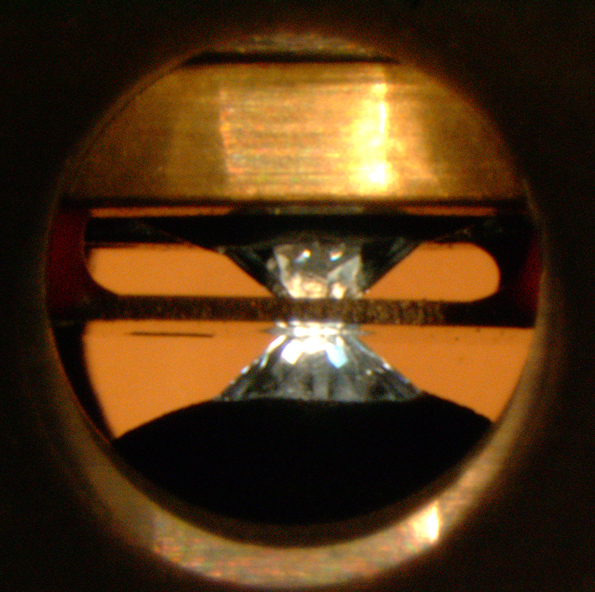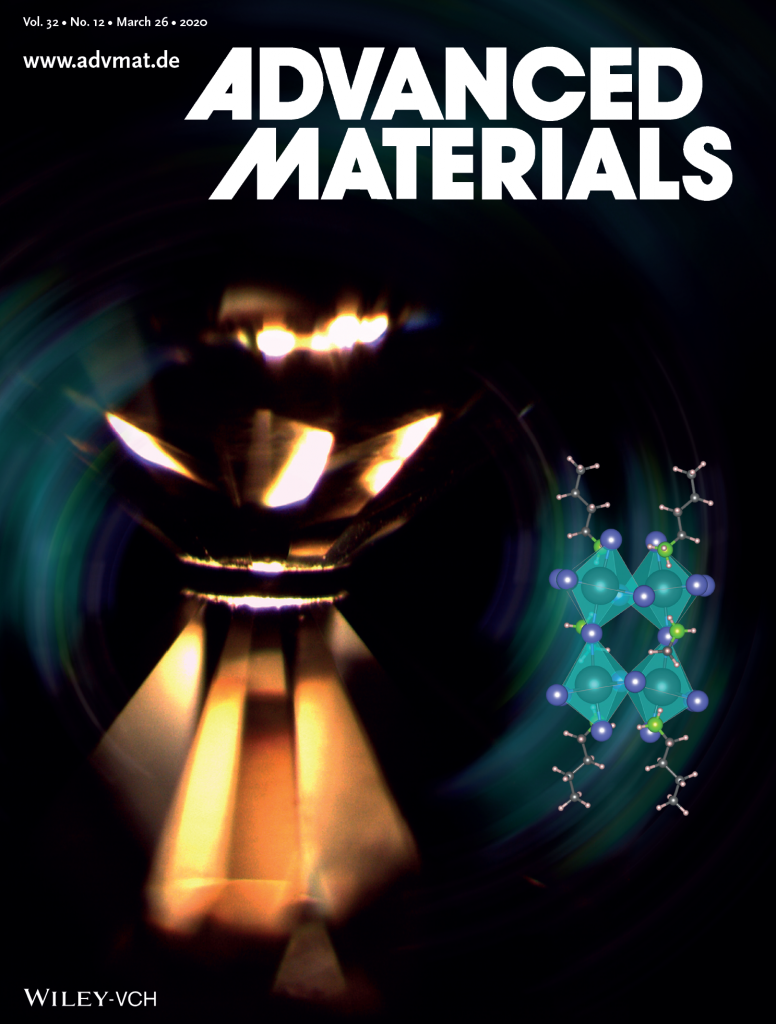High pressures allow control over the unit cell and inter-atomic spacing of material and open a new route to discover totally new structural phases and novel properties. Diamond anvil cell (DAC) is a useful device to allow going up to tens or hundreds of Gigapascal (GPa) owing to its tiny contact area(100-500μm), while the deepest ocean on the earth, 10000 meters below ground, can only achieve 0.1GPa. With massive pressures, materials may undergo phase transitions, semiconductor to metal transition, band renormalization and magnetic reordering.
Different from traditional high-pressure studies, our studies focus on low dimensional materials, like 2D layered material, pseudo-1D chain and 0D quantum dots. Due to the size confinement effect at reduced dimensions, novel quantum properties arise under extreme pressure. We have capabilities to characterize in-situ optical properties under high pressures, such as Raman, photoluminescence, micro-absorption and time resolved photoluminescence. In the big picture our team focuses on the following research questions in high pressure studies;
- How does optical, electrical, thermal, and structural properties of quantum materials change under high pressures up to 100 GPa?
- How can we discover new functional quantum materials under high pressures?
- Can we find new exciting technological applications in quantum information, quantum optics, and energy conversion fields when material bonds are subject to change at high pressures?
- Can we find novel phases of materials at high pressures and discover novel growth routes to realize them at room temperature without the need for high pressures?
Select publications
- 2D layered organic lead perovskites:
https://onlinelibrary.wiley.com/doi/abs/10.1002/adma.201907364 - Pseudo-1D titanium trisulfide TiS3
https://www.nature.com/articles/ncomms12952?origin=ppub - Pseudo-1D tellurene ribbon
https://pubs.rsc.org/en/content/articlelanding/2019/nr/c9nr06637c#!divAbstract





